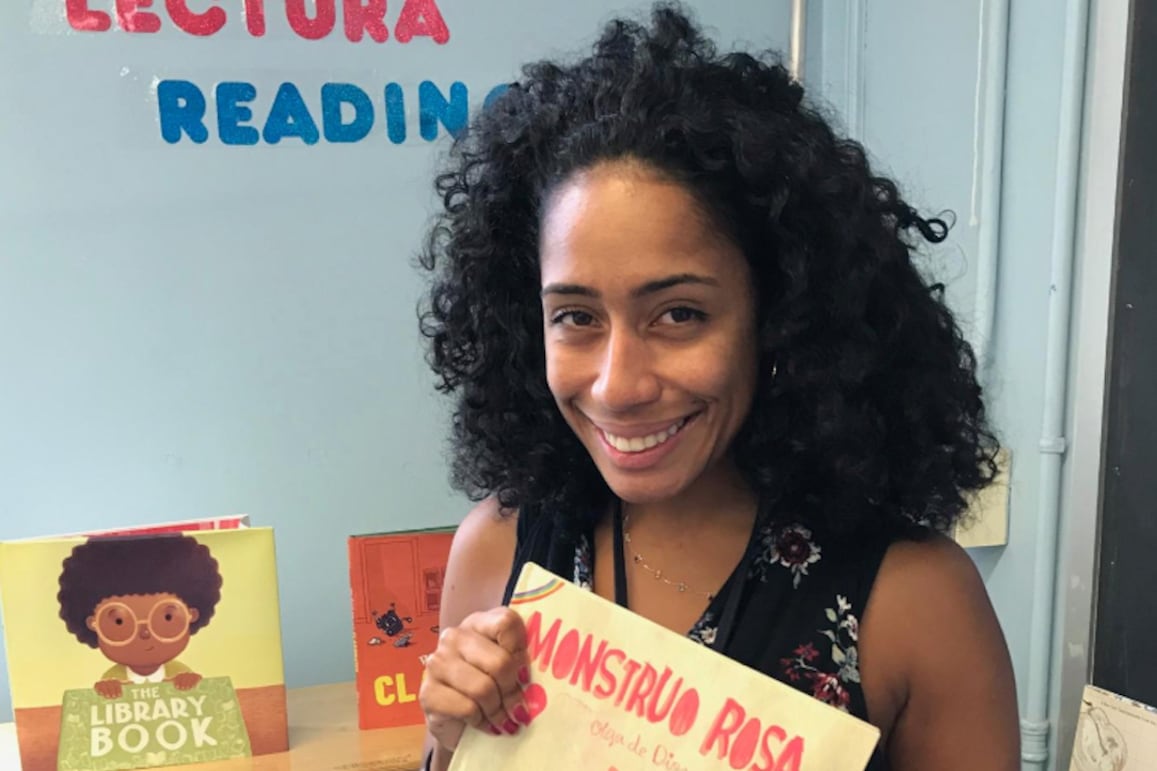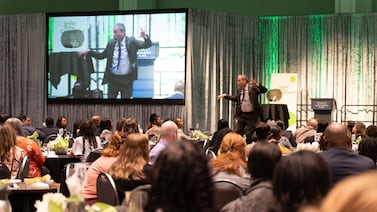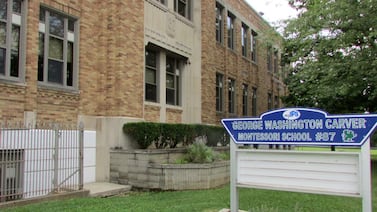So much of teaching a new language happens in the small moments: in the chatter among peers, in asking to use the bathroom.
This year, with New York City public schools shuttered so frequently due to coronavirus cases, students had far fewer opportunities for these casual conversations and questions, said Rebecca Quiñones, a second grade dual-language teacher at P.S. 139 in Ditmas Park, Brooklyn.
“Teaching students literacy in English and Spanish takes consistent day-to-day work,” she said, but there have been weeks when she saw her students only once or twice.
For now, Quiñones is using her limited face time to make sure those who struggle the most have what they need — ”whether it means swapping out one book for another or planning to work with specific children in small groups with more frequency than others,” she said. “I teach for equity, not equality.”
Quiñones, who was named to the International Literacy Association’s 30 Under 30 list, spoke recently with Chalkbeat about seeing herself in her students, what it takes to master a new language, and how she puts the needs of her English learners first.
This interview has been lightly edited for length and clarity.
Was there a moment when you decided to become a teacher?
As a child, I enjoyed the performing arts as well as the academic part of the school. There is a performance aspect to teaching, especially when we read children’s books. I felt as though the career was a blend of my two passions. When I found out about bilingual education, I was sold. I always knew how to speak Spanish but didn’t know how to read or write it until college. Realizing I could teach other children who grew up like me, that aspect of being bilingual was crucial to me.
What does a typical day look like for you now?
If I am teaching in person that day, I work with part of my class — anywhere from three to 10 students that day. We wear masks and strive to socially distance all day. I still split up the languages of instruction. I’ll either teach English in the mornings and Spanish in the afternoons or vice versa. When I go home, I check on my remote students’ work with their “blended remote” teacher, who works with them on the days they are learning remotely. I then plan for my next day in the classroom based on what the students didn’t learn at home. On remote days, I teach all 28 of the students in my class at once.
What challenges do you face teaching bilingual education this year?
Due to the current model the New York City Department of Education has put in place, there are times when I only see children once or twice a week, whether it’s virtually or in person. Teaching students literacy in English and Spanish takes consistent day-to-day work. A lot of the language work we do also takes place in the little moments in the classroom. Moments when they share stories, ask to use the bathroom, and participate are all opportunities to practice language. Due to the inconsistencies with hybrid/remote learning, these moments are not as common.
Tell us about the recent International Literacy Association honor you received, and what the award means to you.
I was awarded the ILA 30 Under 30 award, highlighting young people advocating for literacy for all children. I was acknowledged for my approach to teaching and researching bilingual education. My views are that bilingual programs should add value to children’s home language. I strive for children to be proficient in both their native language and in English. Although the award is a real honor, I want to make it clear that I am not the only one doing this work. There are bilingual educators across the country that have been doing this for years.
What’s something happening in the community that affects what goes on inside your class (or your school)?
My school is in Ditmas Park, Brooklyn, a mixed community recently impacted by gentrification. The neighborhood is historically an Arab, Black, and Latino community. With gentrification, there are many more affluent families in the neighborhood who are attracted to the benefits of bilingual education. It takes a conscious effort on my and the school’s part to make sure that our dual-language classrooms serve our Latinx families and put their language needs first.
What does putting their needs first look like?
On a school level, we strive to make sure that information is given to families in a way they can access easily. We learned during the pandemic that our ways of communicating to families did not cater to all of the populations. Not all families are digitally fluent.
Latinx children are diverse and have varying needs, therefore, I don’t have a blanket answer for this. But basically, I pay attention to the areas of the curriculum that may be difficult for my Latinx children to access. This can be a book, a skill, or content. The first thing I do when I plan for a school day is I make a plan for how I am going to address this — whether it means swapping out one book for another or planning to work with specific children in small groups with more frequency than others. I teach for equity, not equality.
Tell us about your own experience with school and how it affects your work today.
When I was in school in Brooklyn during the late 1990s and the early 2000s, the classrooms were actually very diverse. I was surrounded by children of all ethnicities, with white children only being the slight majority. Therefore, I had a lot of exposure and natural acceptance toward cultures different from mine. My current classroom is similar, with Latinx children having the slight majority. Because of this, I am continually looking for ways to celebrate diversity in the classroom — from the projects I do to the books I read to the decorations in the class.
What’s the best advice you’ve ever received, and how have you put it into practice?
“We learn by doing.” Children can read as many books and watch as many shows in Spanish, but they don’t truly grasp the language unless they are put in situations where students must apply what they know. This year, I strive to put my students in these situations, and I have seen growth in their English and Spanish abilities. It is similar for teachers. We can attend 100 hours of professional development, but what ultimately makes you a better teacher are the years you spend in the classroom, virtually or in person.









